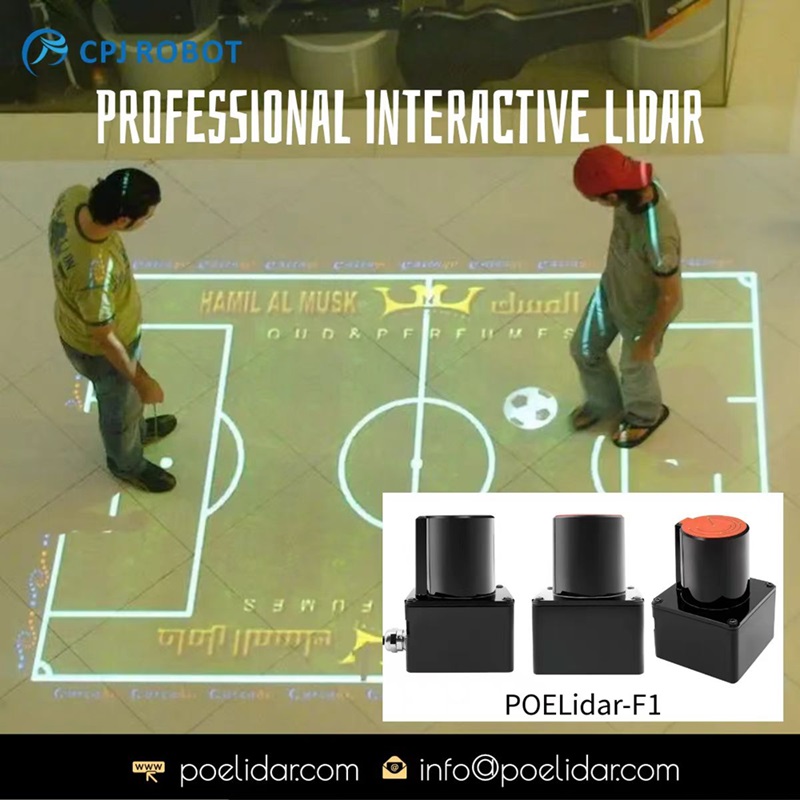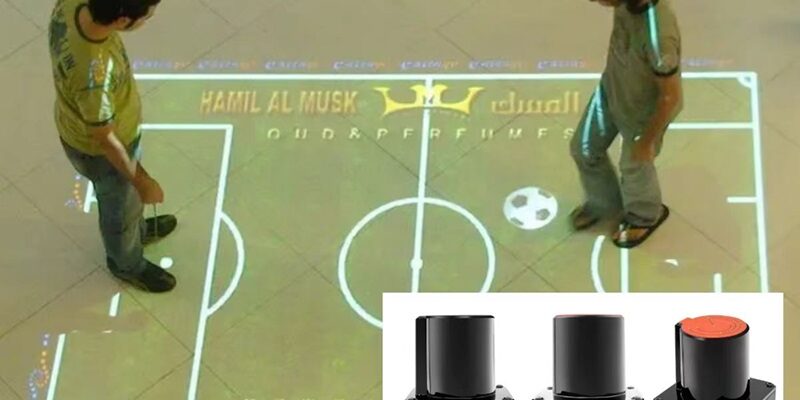In recent years, LiDAR ground interactive projection games have emerged as a cutting-edge technology that blends entertainment, education, and innovation. These games are not only transforming how we play but also how we interact with spaces in commercial, educational, and recreational settings. But what exactly is LiDAR ground interactive projection, and why is it gaining popularity across all age groups? Let’s dive in.
What is LiDAR Ground Interactive Projection?
LiDAR (Light Detection and Ranging) is a remote sensing technology that uses laser pulses to measure distances and create detailed 3D maps of environments. When combined with ground interactive projection, LiDAR enables real-time interaction between users and projected visuals on floors or walls. The system detects movement and gestures, allowing users to “touch” or “play” with the projected content.
How Does LiDAR Interactive Projection Work?
The principle behind LiDAR interactive projection is simple yet sophisticated:
- LiDAR Scanning: The LiDAR sensor scans the environment, capturing precise data about the position and movement of objects or people within its range.
- Real-Time Processing: The system processes this data in real time to detect interactions, such as footsteps, hand gestures, or object movements.
- Projection Mapping: Based on the input, the projector displays dynamic, interactive visuals on the ground or walls, creating an immersive experience.
- Feedback Loop: The system continuously updates the visuals based on user interactions, ensuring a seamless and engaging experience.

Why Are LiDAR Ground Interactive Projection Games So Popular?
The appeal of these games lies in their ability to cater to diverse age groups, offering unique experiences tailored to different interests and preferences. Here’s how they captivate various demographics:
1. Children: A World of Wonder and Creativity
LiDAR ground interactive projection games are a hit among children, tapping into their natural curiosity, love for play, and desire for exploration. These games offer:
- Interactive and Fun Experiences: From stepping on virtual fish to painting in a digital aquarium, children are drawn to the engaging and dynamic nature of the games.
- Educational Value: Many games are designed to combine learning with play, turning traditional playgrounds into interactive learning spaces.
- Customizable Content: Games can be tailored to suit different age groups, ensuring age-appropriate challenges and entertainment.
For example, a popular choice is the “Painting Aquarium”, where children can draw fish on paper, scan them, and watch their creations come to life in a projected underwater world. This blend of creativity and technology keeps kids entertained for hours.
2. Teenagers: Dynamic and Tech-Savvy Entertainment
While direct references to teenagers are limited, it’s clear that this age group is drawn to the interactive and dynamic nature of LiDAR projection games. Teenagers, who are often early adopters of technology, appreciate:
- Immersive Experiences: The ability to interact with high-tech visuals appeals to their tech-savvy nature.
- Social Interaction: Multiplayer games encourage group play, making them ideal for social gatherings or events.
- Innovative Appeal: The futuristic feel of LiDAR technology aligns with teenagers’ interest in cutting-edge trends.
3. Adults: A Blend of Entertainment and Ambiance
Adults are not left out of the fun. LiDAR ground interactive projection games have found their way into commercial spaces, such as malls, exhibitions, and restaurants, where they:
- Enhance Ambiance: These installations create a lively and modern atmosphere, attracting visitors and boosting engagement.
- Provide Novel Experiences: Adults can enjoy unique, interactive games while dining or shopping, adding an element of surprise to their routine.
- Family-Friendly Appeal: Parents can relax while their children play nearby, making it a win-win for all.
For instance, in a restaurant setting, adults can enjoy a meal while their kids engage with interactive floor games, creating a harmonious and enjoyable environment for everyone.
4. All Ages: Universal Appeal
One of the greatest strengths of LiDAR ground interactive projection games is their versatility. With a wide range of game types and interactive content, these games cater to all age groups. Whether it’s a virtual soccer match, a dance floor, or a nature-themed exploration, there’s something for everyone.
Applications and Impact Beyond Entertainment
LiDAR ground interactive projection games are not limited to entertainment. They are making waves in various sectors:
- Retail and Marketing: In malls and stores, these games attract foot traffic and enhance customer engagement.
- Education: Schools and museums use interactive projections to create immersive learning experiences.
- Healthcare: Rehabilitation centers employ these games for physical therapy, making exercises more engaging.
- Events and Exhibitions: They add a futuristic touch to trade shows and exhibitions, increasing visitor interaction.
Conclusion
LiDAR ground interactive projection games are revolutionizing the way we play, learn, and interact. By combining advanced technology with creative content, these games offer something for everyone—children, teenagers, adults, and seniors alike. Whether it’s sparking creativity in kids, providing a tech-savvy experience for teens, or enhancing ambiance for adults, the possibilities are endless.
As this technology continues to evolve, we can expect even more innovative applications that will further blur the lines between the physical and digital worlds. So, the next time you step on a glowing floor or interact with a projected game, remember—you’re not just playing; you’re experiencing the future of entertainment.







